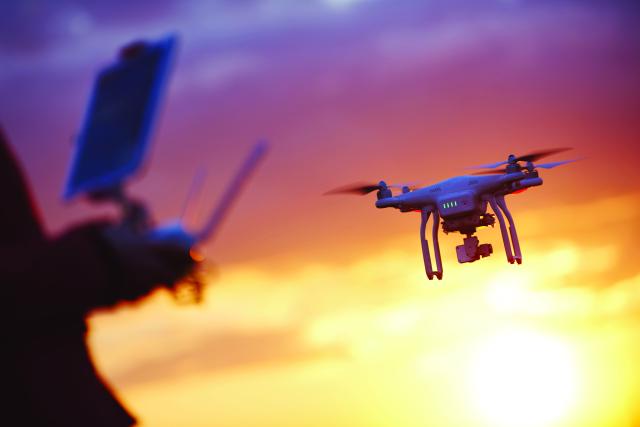
(Source: Dmitry Kalinovsky/Shutterstock.com)
[Editor's note: This story originally appeared in the April 2020 edition of E&P. Subscribe to the magazine here.]
In recent years, drones have greatly increased the efficiency, accuracy and scope of leak detection that they can provide. Before drones came along, maintenance personnel would walk a facility with a thermal camera and a sniffer. It would be up to each individual to calibrate equipment, define and follow a predetermined route and evaluate every valve or connection. It also would be up to them to record and document the findings. This was an efficient/inefficient and unreliable way of conducting onsite inspections, but it was the only option.
Once these cameras were mounted to drones to capture an aerial perspective, the inspection solution game was upped to a great degree. While this was a big step in the right direction, it was still an efficient/inefficient system. Flights had limited battery life and carrying capacity, and they collected less-precise data. The data they did collect were accessible only after landing.
With much more sensitive equipment on board, drones conduct nondestructive testing (NDT) safer, faster and more cost-effectively. They pinpoint leaks across multiple facilities, within centimeters of accuracy and in a fraction of the time it takes a ground crew to walk along flowlines and around tanks. Ten locations can be scanned in a day compared to the one or two that can be by the older methods, delivering data accurately and reliably in real time, streamed to the drone operator and end user.
Here’s where Big Data comes in. This process is repeatable, with autonomous flight, providing historically referenceable data usable across multiple company departments such as engineering, geographic information systems, construction, survey, maintenance and repair, or to anyone with a need to know. These data can be used for design, planning, safety evaluations, maintenance scheduling and detecting problems in good time before malfunctions or catastrophes occur.
And it’s getting better. Drones are now replacing ground crews, planes and helicopters. Camera systems are multifunctionable. In addition to collecting digital data, they also optically collect substance identification and parts-per-million data in one time-efficient flight. Fixed-wing drones can cover long ranges and more area in a shorter time, limited only by visual lines of sight as required by the Federal Aviation Administration’s regulations. Flight times, battery life, operational distance, pixel quality and GPS, real-time kinematics and post-production kinematics have pushed drone capabilities into a leading role in NDT data collection. The results of this kind of automation are clear: reduced staffing requirements, faster detection and solution of problems, greater safety and better cash flow. In today’s tight equity economy, a drone’s real-time data collection can be part of the move toward real-time profitability.
The challenge next becomes taking drone flights and NDT to the next level, which can be accomplished by understanding more about the task at hand, how to efficiently perform that task, what kind of information to look for, how to fly the mission within defined standards, repeatability and how to deliver more accurate data. It’s very clear that with the combination of Big Data and the latest drone technology, the sky really is the limit.
Recommended Reading
BKV Appoints Dilanka Seimon to New Chief Commercial Officer Position
2025-04-03 - BKV Corp. has created a new chief commercial officer position and placed industry veteran Dilanka Seimon in the role.
NGP Backs Wing Resources with $100MM to Buy Permian Mineral Interests
2025-04-02 - Wing Resources VIII, which is backed by NGP Royalty Partners III, will focus on acquiring “high-quality” mineral and royalty interests across the Permian Basin, the company said.
Exxon Mobil Vice President Karen McKee to Retire After 34 Years
2025-04-02 - Matt Crocker will succeed Karen T. McKee as vice president of Exxon Mobil and president of its product solutions company.
Double Eagle Team Re-Ups in Permian, Backed by EnCap’s $2.5B
2025-04-02 - The fifth iterations of Double Eagle Energy and its minerals subsidiary, Tumbleweed Royalty, have received a $2.5 billion equity commitment from EnCap Investments LP—the day the E&P finalized a $4.1 billion sale to Diamondback Energy.
Waterous Raises $1B PE Fund for Canadian Oil, Gas Investments
2025-04-01 - Waterous Energy Fund (WEF) raised US$1 billion for its third fund and backed oil sands producer Greenfire Resources.
Comments
Add new comment
This conversation is moderated according to Hart Energy community rules. Please read the rules before joining the discussion. If you’re experiencing any technical problems, please contact our customer care team.





